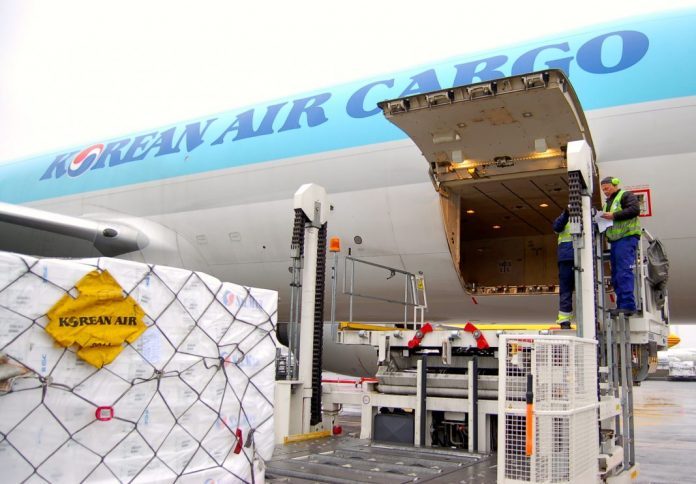A stray thought that is not necessarily all that far off the mark.
They’re popping up all over the place like mushrooms – in increasing numbers. In foreign markets such as Florida, Maine, Dubai, South Africa and China. Last week SalmonBusiness reported on a major investment in Japan, where the Israeli company AquaMaof is building a 10,000 tonne production complex that is financed by the Singaporean fund 8F.
It makes perfect sense.
Land-based fish farms have been operating for ages. Yes, anyone who has had an aquarium with fish, knows the technology works. The bottleneck has been in working out a way to reduce the sky-high production costs per kilo to a level where they are lower than the sales price for the salmon.
Price premium
Overseas markets, in North America, South Africa and the Far East, are benefiting from a considerable price premium relative to the European market. The explanation is naturally that the overwhelming majority of global salmon production is located in Western Europe, and the price is set here. The overseas markets are dependent on having freshly packed salmon flown in, popularly known in the business as “flying fish”.
It is here the future for land-based salmon production lies.

As well as paying for the salmon they receive, the “flying fish” markets must pay the cost of the air freight. If fish are farmed in the actual markets, the sales price is between one or two dollars higher per kilo than in Europe.
So far, the land-based producers have the burden of proof, of which they must prove that their technology can deliver fish of the right quality at production costs lower than the sales price (including air freight) of EUR 7-8 per kilo. No one has achieved that – so far.
Not unlikely
But what happens if we presuppose for once that they, in the foreseeable future, actually achieve this?
For the time being this is a thought experiment, but a far-fetched scenario it is not. I am not about to assess how likely this might be; but am just airing the possibility of this assumption – which many investors have already made by injecting millions into the plants that are now being constructed. They believe that day is imminent.
And when/if that day comes, to be sure, there will be major upheavals.
With a full cost that covers interest rates, instalments and investors’ demands for returns on capital, considerable funds are and will be poured into the sector. Capital is by no means a bottleneck for profitable projects.
Soon standing room only
It can become pretty crowded with so many vying for the same goal. Initially for those who possess the technology and production capacity to build land-based plants. There can be many potential developers or buyers, which could include today’s traditional and extremely prosperous marine farming companies.
The change won’t happen overnight. Lead-time in connection with the construction period for the plant, and time spent in raising market-ready fish, will give the market players time to reassess the situation.
The next stage takes place when the newly land-produced salmon – in huge quantity – appears on the market. That’s when the true significance of it all will hit home.
High-cost countries and companies will be vulnerable, as this possible turn of events would provide a boost to supply that is so sorely waited for by those on the demand side. Increased supply would, all things being equal, apply heavy pressure on salmon prices – not least in the overseas markets. If European or Chilean salmon producers are no longer competitive in overseas markets, there will be a lot of fish for sale in the domestic markets.
Regional suppliers
It’s not a bold claim to predict that henceforth the salmon markets would be served by regional suppliers. Traditional salmon farming, in open sea cages, won’t be afforded even a Kodak moment, they will still have the lowest production costs at cage edge, but they will be squeezed out by some of the foreign markets.
Chile’s position as market leader in the U.S. market will be subject to terrific pressure. Without substantial neighbouring markets other than the 100,000 tonnes importer Brazil, it could spell hardship to those farming salmon in southern stretches of Latin America. Surplus fish would have to be placed in the discounted frozen market, where all of the world’s producers are positioned equally and the ensuing competition would amount to survival of the fittest.
European producers would first and foremost concentrate on the EU market, Eastern Europe and as far into Russia and the Middle East as is possible to reach by vehicle and short-haul flights.
Canada would focus on serving the U.S. market.
There are clear environmental rewards with the above mentioned scenario. The carbon footprint for farmed salmon would be conspicuously less.
While the North American market can be partially served by traditional production in Canada, the situation is different in the other major “flying fish” market. The continent where most of the world’s people live, Asia, is in the long term the biggest growth market for salmon, and a region that is crying out for land-based production capacity. If the land-based pioneers succeed there, it will virtually be “the sky’s the limit” for exploiting market potential.


